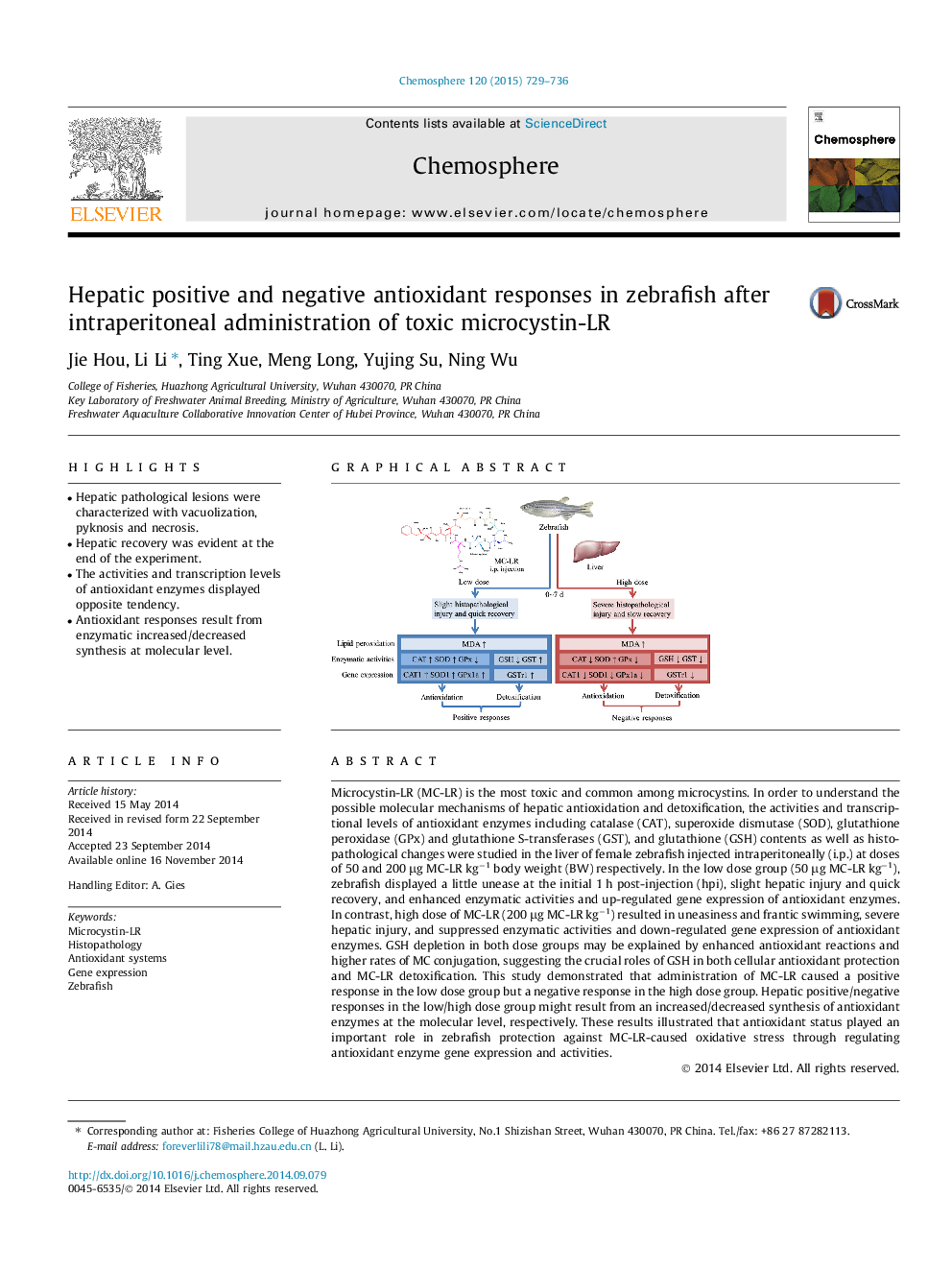| Article ID | Journal | Published Year | Pages | File Type |
|---|---|---|---|---|
| 6308319 | Chemosphere | 2015 | 8 Pages |
â¢Hepatic pathological lesions were characterized with vacuolization, pyknosis and necrosis.â¢Hepatic recovery was evident at the end of the experiment.â¢The activities and transcription levels of antioxidant enzymes displayed opposite tendency.â¢Antioxidant responses result from enzymatic increased/decreased synthesis at molecular level.
Microcystin-LR (MC-LR) is the most toxic and common among microcystins. In order to understand the possible molecular mechanisms of hepatic antioxidation and detoxification, the activities and transcriptional levels of antioxidant enzymes including catalase (CAT), superoxide dismutase (SOD), glutathione peroxidase (GPx) and glutathione S-transferases (GST), and glutathione (GSH) contents as well as histopathological changes were studied in the liver of female zebrafish injected intraperitoneally (i.p.) at doses of 50 and 200 μg MC-LR kgâ1 body weight (BW) respectively. In the low dose group (50 μg MC-LR kgâ1), zebrafish displayed a little unease at the initial 1 h post-injection (hpi), slight hepatic injury and quick recovery, and enhanced enzymatic activities and up-regulated gene expression of antioxidant enzymes. In contrast, high dose of MC-LR (200 μg MC-LR kgâ1) resulted in uneasiness and frantic swimming, severe hepatic injury, and suppressed enzymatic activities and down-regulated gene expression of antioxidant enzymes. GSH depletion in both dose groups may be explained by enhanced antioxidant reactions and higher rates of MC conjugation, suggesting the crucial roles of GSH in both cellular antioxidant protection and MC-LR detoxification. This study demonstrated that administration of MC-LR caused a positive response in the low dose group but a negative response in the high dose group. Hepatic positive/negative responses in the low/high dose group might result from an increased/decreased synthesis of antioxidant enzymes at the molecular level, respectively. These results illustrated that antioxidant status played an important role in zebrafish protection against MC-LR-caused oxidative stress through regulating antioxidant enzyme gene expression and activities.
Graphical abstractDownload full-size image
